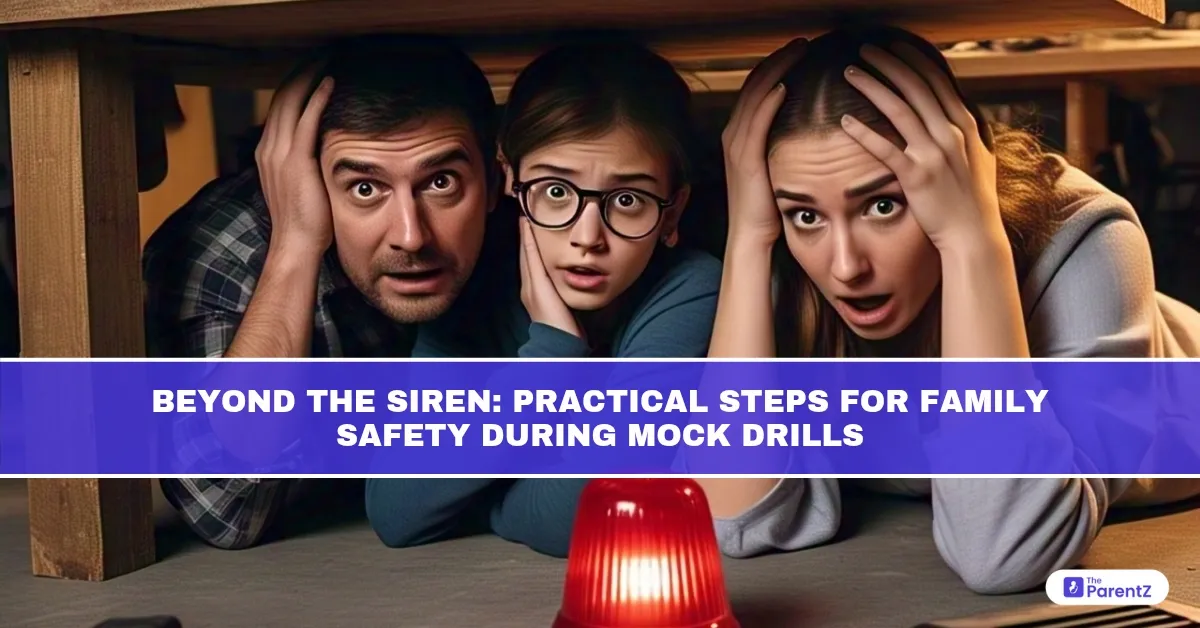When sirens sound and streets go quiet, a mock drill is not just a simulation—it’s a reminder. A reminder that being prepared can save lives.
On May 7, 2025, India is conducting one of its largest-ever national civil defence mock drills across more than 240 districts. The drill is part of Operation Abhyaas, initiated by the Ministry of Home Affairs, especially after recent threats and the rise in tensions in the region. The goal is simple but powerful: to prepare people—not panic them.
Major cities like Delhi, Mumbai, Chennai, Kolkata, and Hyderabad will take part. Some places will see blackout drills (where electricity is turned off to simulate a power cut during an airstrike), others will carry out evacuation plans, or emergency siren tests. In Tamil Nadu, the Madras Atomic Power Station will run specific drills, while in Bareilly, a 10-minute blackout will test public readiness.
So, what can you do when a mock drill happens near you? How do you make sure your family is ready? Read below this article to explore some helpful family safety tips during mock drills.
What is a Mock Drill?
A mock drill is a practice run of what to do in an emergency. It's like a safety rehearsal. Just like you’d practice a fire escape plan at school or home, a mock drill helps communities prepare for bigger threats like earthquakes, fires, bomb threats, terror attacks, or chemical leaks. The goal is to make sure that if a real crisis happens, everyone knows what to do—calmly and quickly.
Countries like Japan (well-known for earthquake drills), South Korea (which often conducts civil defense siren tests), Israel (known for missile alert simulations), and the United States (with regular school lockdowns and fire drills) have long used these drills to educate and protect their citizens. These aren’t just one-off events; they’re routine, thoughtful practices that make safety second nature.
5 Simple and Practical Steps for Family Safety
1. Talk About It
The first step is always awareness. Tell your children and family that a drill is not a real emergency. Explain why these drills happen—not to scare, but to prepare.
2. Make a Safety Plan
- Decide on a safe spot in your home: a room without windows, or a basement, if available.
- Choose a meeting point outside your home in case of evacuation.
- Write down emergency contacts, including neighbors, relatives, and local authorities.
3. Prepare an Emergency Kit
Keep a small bag ready with:
- Drinking water and snacks
- A flashlight with extra batteries
- Basic medicines and a first-aid kit
- Important documents in a zip-lock (IDs, insurance papers, emergency numbers)
4. Practice the Plan
Run through your plan with the family. Teach kids how to stay low during a fire drill, or where to go during an earthquake simulation. The more you practice, the more confident everyone becomes.
5. Stay Calm, Stay Updated
During a drill, listen to official announcements on the radio, TV, or your local government’s website or mobile alerts. Avoid spreading rumors or forwarding unverified messages.
Conclusion
Emergencies don’t come with warnings. But being prepared gives your family a much better chance of staying safe and helping others too. Mock drills are not just government exercises. They are opportunities—to learn, to teach, and to respond better as a community.
This May 7, as India joins many nations in taking preparedness seriously, it’s time to let your home be one that doesn’t just hear the siren—but knows exactly what to do next.








Be the first one to comment on this story.